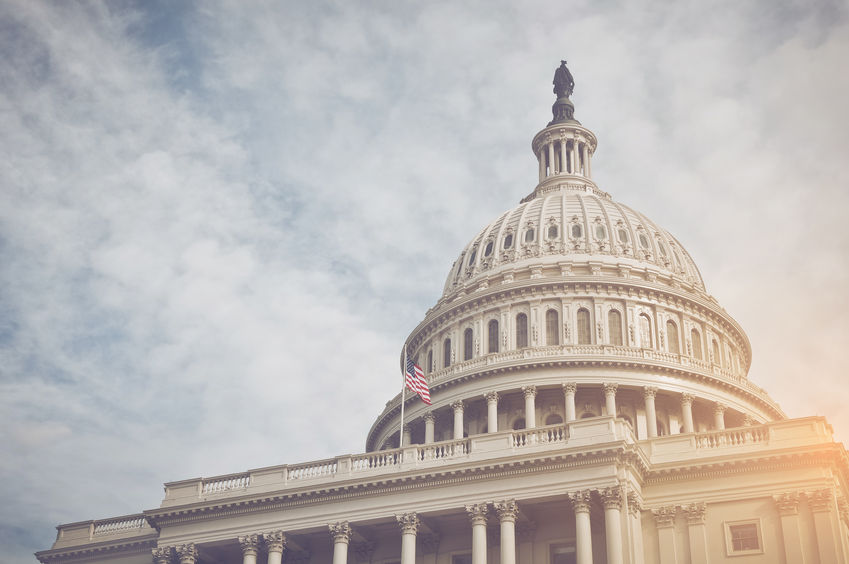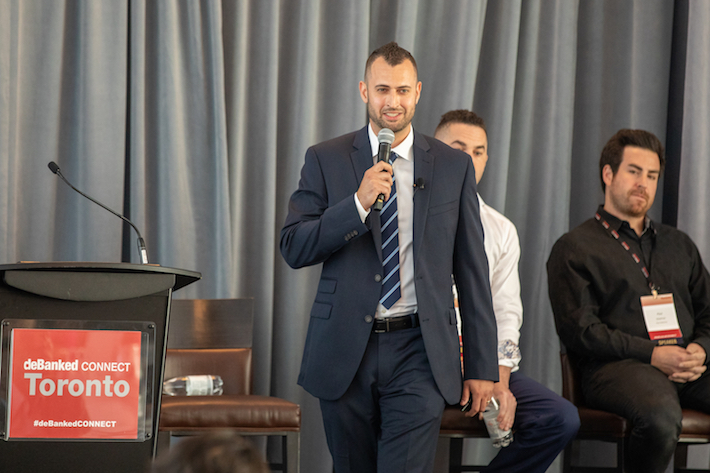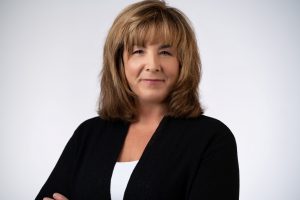Archive for 2020
Prashant Fuloria Explains Why Fundbox Has Been Successful in 2020
September 28, 2020 When Prashant Fuloria joined Fundbox as Chief Operations Officer in 2016, the San Franciscan firm was a three-year-old startup with less than eighty employees. By the time Fuloria moved into the office of CEO this July, the small business credit and invoice financing company had grown exponentially, with more than $430 million in raised capital to date and triple the number of employees.
When Prashant Fuloria joined Fundbox as Chief Operations Officer in 2016, the San Franciscan firm was a three-year-old startup with less than eighty employees. By the time Fuloria moved into the office of CEO this July, the small business credit and invoice financing company had grown exponentially, with more than $430 million in raised capital to date and triple the number of employees.
At the height of the pandemic, many firms halted funding or shuttered their doors for good. Meanwhile Fundbox kept lending, and outperformed the market, Fuloria said.
“It’s become very clear to us that we have greatly outperformed the market,” Fuloria said. “In terms of delivering value to customers, and also in terms of our business performance.”
In the toughest weeks of the pandemic, he said that Fundbox’s loan delinquency rose to 8-9%, up from a “low single-digit number” pre-pandemic. In comparison, the industry standard according to Fuloria, was a delinquency rate of 30-40%, including from larger firms and more traditional lenders like big banks.
“I think we’ve performed extremely well during COVID; the numbers just validate the investment we’ve made, especially in data,” Fuloria said. “That puts us in a very good position because a number of folks have exited the market and the need, the demand has not gone away.”
The number one thing you can do to perform well in a recession is to have a strong business going into it, Fuloria explained. Fundbox attributes part of its strength to its data. Nearly a fourth of Fundbox’s capital goes toward data assets, Fuloria said.
“If you add it all up, we’ve invested a little over $100 million in our data asset,” Fuloria said. “It’s a big investment for anybody- particularly a big investment for a mid-sized company.”
Fuloria said this money goes toward collecting customer information, which is processed by in-house tech and a talented team of engineers who can turn data into valuable information for serving SMBs.
“Small businesses,” Fuloria said, “they have the complexity of enterprises but the scale of consumers.”
Coming from twenty years of tech and product managerial experience at firms like Google, Facebook, and Yahoo, Fuloria knows a thing or two about scale. He said he found his roots at Google, working when it was just a small team- by the time he left six and a half years later, Google had 35,000 employees.
When it came to joining Fundbox in 2016, Fuloria said he was attracted by the company’s mission, the talented team there, and how in just three years, the small firm had demonstrated how it could help SMBs.
“Fundbox as a company said ‘We are a financial services platform that is powering the small business economy with new credit and payment solutions,'” Fuloria said. “And that mission was very strong: it made sense to me, and it resonated with me.”
Nav CEO Talks About Platform Enhancements
September 28, 2020 “Our news is really about improving and enhancing our platform to use real-time business data to uncover and align qualifications for small business owners to the best financing options available to them,” said Nav CEO Greg Ott about a recent announcement.
“Our news is really about improving and enhancing our platform to use real-time business data to uncover and align qualifications for small business owners to the best financing options available to them,” said Nav CEO Greg Ott about a recent announcement.
Nav is a small business information service that connects borrowers to lenders across the entire finance industry, from SBA loans, major credit cards, to nonbank lenders, and more. This new enhancement streamlines the finance process for both sides of the transaction, Ott explained.
“Historically, the model is inverted disproportionately against the small business owner, in that they can’t see what they’re qualified for until after they apply,” Ott said. “By using real-time business analysis and dynamic financing profiles, Nav is the only place that can show them what they can qualify for before they apply.”
Nav is also adding a new service team that connects to small businesses through the digital platform, offering a more personalized experience; someone will be on the line to help borrowers find their way. The platform uses cash flow, revenue, credit, and behavioral data to match SMBs with loan offers.
Nav is expanding its service because Ott said this year, many businesses could not find financing at all. Nav began helping customers find lenders for PPP loans, facilitating 70k applications in all and built an online community of 18k businesses going through the process this year alone.
Ott said it became clear during the rounds of PPP and government stimulus that banks gave preferential treatment to some of their customers and left out small businesses.
“Many banking options aren’t available to the vast majority of small businesses,” Ott said. “The traditional financial system is not always available or not the best option for a small business owner. Small business owners know this in spades, It’s just now that in the growth of this fintech ecosystem that it’s becoming clear how big that addressable market is.”
United Capital Source CEO Jared Weitz Discusses The State of Small Business Finance
September 24, 2020Jared Weitz, the CEO of United Capital Source, recently sat down (virtually) for an interview with me to discuss the state of small business finance. During it, Weitz makes an alarming prediction, that pandemic related events will lead to 50% of all restaurants permanently closing. You can watch our full talk below:
Amid Pandemic, Small Businesses Pivot to Sell Personal Protective Equipment
September 23, 2020 A number of small businesses—including those in the merchant cash advance industry—faced with little or no way to make money for months—have pivoted to selling personal protective equipment.
A number of small businesses—including those in the merchant cash advance industry—faced with little or no way to make money for months—have pivoted to selling personal protective equipment.
It’s no wonder businesses across the U.S. have shifted gears. With the pandemic raging, and consumers and businesses trying to return to some sort of normalcy, there’s high demand for these products, causing even businesses that previously had no connection to them to spring into action.
“It’s not my forte; I had to pivot just to make sure I could stay afloat before things turned around,” says John DiCanio, founding partner of Direct Merchant Funding in Bethpage, N.Y.
This past spring, at a time when everything in the MCA business stopped, he heard from a merchant in the medical supply field that masks were becoming very important. The merchant connected him to a contact in Hong Kong from whom he was able to buy hospital-grade and non-medical grade masks and sell them to local hospitals, local businesses and others.
DiCanio says he did it for a short time only—two months—which was enough to tide him over under his
regular business started coming back. Mask-making is still a big business and a lot of people are still doing it, but he prefers to stick to merchant cash advance, which he’s been doing for around 15 years. He says business has picked up enough that he no longer has the need to do anything on the side—and he hopes it stays that way.
Many funding industry participants are still selling these types of products, but it’s somewhat of a hush-hush business. Not everyone wants to talk about it for any number of reasons, including embarrassment and fear of looking weak to customers and business connections. Even so, small businesses that pivoted say they are doing the best they can to stay afloat—and there’s no shame in that.
Kat Rosati, founder of Apparel Booster in Riverside, Calif., a product development agency for luxury and socially conscious brands, began hand-sewing masks to help support her business that had been hit-hard by the pandemic.
She has manufacturing partners all over the world, and production was at a standstill for her various products. She couldn’t import fabric needed for the company’s various projects and a lot of production partners were forced to close. Luckily, she had a connection to a fabric mill in Pennsylvania that focuses on antimicrobial products that was willing to provide her with material.
She hired temporary workers to help her make masks, which she’s producing at a rate of about 150 a week. She sells them to consumers and small businesses. The revenue has helped defray overhead expenses, among other things. “It hasn’t been super profitable, but it’s definitely helped keep the business alive,” she says.
She had to furlough her four-person team because she can’t afford to pay them without regular client work coming in. Her husband, who works in the restaurant industry, was also furloughed. So whatever money she can bring in, helps. “I’m watching small business owners around me that haven’t made any kind of pivot close left and right,” she says. “The fact that I can keep mine alive makes it worth it for me.”
To be sure, small businesses pivot for all sorts of reasons, and it’s not always because they are struggling. Francis Perdue, a publicist and business consultant in Birmingham, Ala., began selling PPE products including gloves, kn95 masks, surgical masks, customizable cloth masks, child and adult-sized shields, suits, gowns and the Xenon Fever Defense machine which uses AI technology to measure skin temperature and detect potential fever. She says she saw a need for these types of products in local schools as well as in hospitals and clinics in predominantly black neighborhoods. She is still consulting, but doing this as a side gig while the need persists.
Another example is MORGAN Li, a retail and hospitality manufacturer in Chicago Heights, Ill. The company identified the need and opportunity to help businesses remain open or reopen to customers while abiding by new recommendations to support public health. Thus, the company began producing customized social distancing materials including sneeze guards, safety shields, signage and floor graphics for various businesses to remind employees and customers to comply with social distancing requirements, according to a spokeswoman.

More recently, Andy Rosenband, the company’s chief executive, saw another opportunity to help communities prepare for another critical stage—reopening schools. He created a line of personal protective equipment that specifically addresses the challenge of social distancing in schools to keep students, teachers and staff safe.
For some small businesses, the shift is likely to be a permanent one.
JB Herrera, founder of Perceptive Insights a San Diego-based small and medium business consulting and mentoring company, says his firm was growing, but PPE products offer the ability to create a broader impact and are likely to be more profitable than merely a consulting business.
He has clients in China and back in December when things were starting to get bad there, he realized that the problem could spread massively to the U.S., and if it did, 80 percent or more of businesses would be negatively impacted, in his estimation. Using his business expertise regarding supply chains and pre-existing and new contacts, his company shifted gears to introduce in March a line of FDA-registered products designed to create and maintain safe environments. The products include commercial and personal cleaning solutions, masks, light technology disinfectants, air filtration, and personal sanitizing kits.
Even before the pandemic, the PPE market was worth several billion, he says, and that’s likely to grow exponentially over the next five to 10 years. So much so, that he expects the new business line to represent 90 percent of his revenue for the next three years—at least.
“Even after the spike goes away, it’s still going to be a profitable business in its own right,” he says.
Mnuchin and Powell Defend Pandemic Aid Programs, Say Congress Needs to Agree Before They Can Give out More Money
September 23, 2020 Yesterday, Treasury Secretary Steven Mnuchin and Federal Reserve chair Jerome Powell testified on the COVID response before the House Financial Services Committee.
Yesterday, Treasury Secretary Steven Mnuchin and Federal Reserve chair Jerome Powell testified on the COVID response before the House Financial Services Committee.
They championed the largest stimulus package in the Nations’s history and said the economy was recovering well.
Mnuchin advocated for bipartisan support of targeted forgivable loans- a second PPP loan for businesses still losing revenue, funded by either a new stimulus, reusing the $130 billion still leftover, or reallocating $200 billion from the Main Street Lending program. Of course, all of that is up to Congress, he said.
“I think there’s broad bipartisan support for extending the PPP in businesses that have had revenue drops for a second check,” Mnuchin said.
Chair of the committee, Maxine Waters D-CA, led the questioning. She asked for removing the loan minimum, and noting the slow economic activity; she said 32% of renters could not pay their bills at the beginning of Sept. Other charges, like the possibility of a second wave, were leveled toward the executives.
In response to questions to the Main Street Lending Program (MSLP,) they argued the program was not designed as a stimulus but as a “backstop” and liquidity to already present loan markets.
This might explain why last month, the Congressional Oversite Committee investigated the MSLP because of its low adoption rate and found many problems.
To date, less than $2 billion of loans are “in the pipeline” out of the $600 billion allocated in April. The program is designed with non-forgivable loans supplied by 509 traditional FDIC insured lenders, at a minimum of $250,000. The majority of these lenders are not accepting new customers, unlike PPP loans facilitated by more than 5,000 lenders to mostly new clients- including fintech firms.
The Fed already lowered the minimum down from $1 million, but after questioning whether it could be lowered to under $100,000, Powell said there was very little demand for loans under $100,000. In response to Representative Andy Barr R-KY, about how the program could be improved to service smaller businesses, Powell responded that the program wasn’t created for that.
“The limit now is $250,000, and we have very little demand below a million, as I told the chair a while back,” Powell said. “We’re not seeing demand for very small loans. And that’s really because the nature of the facility and the things you’ve got to do to qualify, it tends to be larger sized businesses.”
The SBA reported findings from the third round of PPP on Aug 10th. The organization found that loans under $50k were the largest category issued. 68% of the 5,212,128 PPP loans were under $50k, and 87% were under $250k.
As Fintech Accelerates in Canada, Smarter Loans Expands
September 22, 2020 Smarter Loans, a Canadian loan comparison site, announced they are expanding their services to new categories- including “Everyday Banking, Insurance, Investing Money Transfers, and Debt relief.”
Smarter Loans, a Canadian loan comparison site, announced they are expanding their services to new categories- including “Everyday Banking, Insurance, Investing Money Transfers, and Debt relief.”
The additions are part of the Smarter Loans’ mission to become the go-to place for Canada’s online financial options. Founders Vlad Sherbatov and Rafael Rositsan founded the company to bring together information on the top financial companies all in one place. They started with information on personal and business financing but have expanded to auto loans, mortgages, equipment financing, and information on all kinds of financial products.
“We wanted to bring additional financial services and products that people can now access online,” Vlad Sherbatov, the president said. “And to do that, we partnered with some of the leading companies that offer these financial services.”

The addition is the latest resource for their 40,000 monthly user base, who access a database of top banks, credit unions, and innovative fintech leaders. Rafael Rositsan, the CEO, said as a trusted industry voice, the firm is adding this new info to update consumers on new opportunities firms provide.
“There’s a rise of companies that are now offering innovative products online,” Rositsan said. “Canadians might not be aware of some of the services that are out there.”
Sherbatov said that Canadians have been gravitating toward conducting business on the go at an accelerated rate this year. The firm listened to the customer base and learned they’re not going online for just financing.
“Entrepreneurs are running their businesses online,” Sherbatov said. “People that used to just shop for household items online are now looking for ways to handle investments and everyday financial errands because the old way of doing things is not available.”
He said that many areas of the financial space have evolved. Customers can obtain life insurance, get a line of credit, and a bank account funded in less than 24 hours, all from the comfort of their home.
“This move is to both bring more services relevant to our existing user base that use Smarter Loans,” Sherbatov said. “But also for all Canadians that are looking for these types of products. We want Smarter Loans to be the go-to place for them to learn about [these offerings], and to learn about the companies behind these products.”
Smarter Loans Expands into Banking, Insurance, Investing, Money Transfers and Debt Relief Solutions
September 22, 2020 Smarter Loans – Canada’s largest loan comparison website – is excited to announce their expansion into new financial categories that include: Everyday Banking, Insurance, Investing, Money Transfers, and Debt Relief.
Smarter Loans – Canada’s largest loan comparison website – is excited to announce their expansion into new financial categories that include: Everyday Banking, Insurance, Investing, Money Transfers, and Debt Relief.
Canadians nationwide use Smarter Loans to find the most innovative financial products and services in the country, compare their options, and make smarter financial decisions. Launched in 2016, Smarter Loans today works with over 80 of the top financial brands in Canada, including banks, credit unions, alternative lenders, financial services and innovative FinTech companies that are leading the digital transformation in the Canadian financial sector.
The expansion is another step by Smarter Loans in helping Canadians access more financial products online.
We believe that Smarter Loans is at the forefront in the evolution of how people want and expect to shop for financial products. There is a big shift towards buying online and companies that are setup to transact and sell their services on the Internet are winning. We work hard to seek out top financial brands and are really excited that Smarter Loans visitors can now find even financial solutions on our site. (Rafael)
It’s a great experience when a person can send money overseas, get life insurance, and open a savings account all from the comfort of their home or on their mobile device. Our mission is to highlight all of the great and reputable companies that offer Canadians that experience. (Vlad)
Smarter Loans has responded to the growing demand for digital financial products and services in Canada by securing working relationships with leading brands that offer financial services online, including chequing and savings accounts, investing solutions, insurance for personal and commercial coverage, international money transfers, debt relief and credit solutions.
The new categories are available to all new and existing Smarter Loans members, everywhere in Canada.
The new categories will help even more Canadians save time and money, and discover great companies that can help them with various financial needs, entirely online.
If you are a financial brand and are interested in discussing partnership opportunities please get in touch with Smarter Loans at: info@smarter.loans.
OLA CEO Mary Jackson: Colorado True Lender Bad for Borrowers
September 21, 2020 Last month, the Colorado Attorney General’s office announced a settlement with Avant and Marlette Funding, setting a precedent for how “true lender” cases will be handled. The fintech lenders and their partners are free to lend in the state, subject to a lot of restrictions, as long as they stick below the 36% APR level.
Last month, the Colorado Attorney General’s office announced a settlement with Avant and Marlette Funding, setting a precedent for how “true lender” cases will be handled. The fintech lenders and their partners are free to lend in the state, subject to a lot of restrictions, as long as they stick below the 36% APR level.
Some touted the decision as a safeguard for fintech bank partnerships. Still, many, like those represented in the Online Lenders Alliance (OLA)- saw misplaced regulation that harms borrowers more than it helps.
Mary Jackson, CEO of OLA, said that while well-meaning, the 36% rule arbitrarily limits the ability for non-prime credit customers to get a loan at all. The limit draws an arbitrary line in the sand, based on an outdated centuries-old lending system, and doesn’t describe loans that last shorter than a year very well, Jackson said.
“What it did was drive out all the lenders,” Jackson said. “Non-prime consumers have fewer choices. They have to go and be subject to fraud or more unscrupulous lenders, or they have to go back to overdraft as another option.”
Jackson represents a group of lenders that offer online services, which regularly partner with banks to provide loans nationwide at higher APR rates than some states allow. Jackson said these are not fintech “rent-a-bank” cases to skirt state regulations, but natural partnerships that enable larger institutions to gain the tech and talent of leading tech companies to reach a greater customer base.
“Big banks cannot keep up with the technology that fintech providers have developed,” Jackson said. “A key US bank has a lot of data scientists that they employ, but if you’re a regional or smaller bank, you don’t have that capability: it’s nearly impossible to drive an IT team as a banker.”

Jackson said that when her firm Cash America, that offered storefront cash advances, was bought by online lender CashNetUSA, she saw the differences between in-person transactions and the IT teams necessary for online lending. “It’s like two different worlds, two different ways of looking at something.”
“Our lenders are sophisticated like Enova, Elevate, CURO, Access Financial,” Jackson said. “These are companies that employ hundreds of data scientists that compete for jobs with Google in Chicago and a small regional bank can’t keep up.”
Fintech talent is helping to reach the 42% of Americans that have non-prime credit scores- FICO scores below 680, according to the Domestic Policy Caucus.
Jackson said these customers, many of whom can pay for loans, have almost no options. Jackson sees many of her partner companies offering a “pathway to prime” service, empowering customers to rehabilitate their credit.
“Most of these people are non-banking customers, these folks have damaged or thin file credit,” Jackson said. “Most banks don’t service that customer, except for overdraft- a 35$ fee for lack of money in their account- I think bankers want to be able to offer longer-term installment loans.”
Jackson said research backs up her claims, pointing to a 2018 US Treasury report that discussed how banks would have to rely on fintech partnerships to innovate and drive product change. That’s what is finally happening, Jackson said.
She also pointed to a 2017 study into the effects of the 2006 Military Lending Act. The act intended to protect military families from lending products with an APR above 36%. The study out of West Point found that the limit only hurt military members, some of which lost their security clearances when their credit fell too low.
“We find virtually no statistically or economically significant evidence of any adverse effects of payday lending access on credit and labor outcomes. In a few cases, we find suggestive evidence of the positive impacts of access. For example, our second survey suggests that a 1 standard deviation increase in the fraction of time spent in a payday loan access state decreases the probability of being involuntarily separated from the Army by 10%”
Not only was there no harm done, but the paper argues on behalf of payday lending as a healthy way to maintain the credit necessary to keep a military job.
She sees similarities in the legal fight over the creation of interstate credit card laws in the 50s and 60s, saying it used to be the case that consumers had to use a texas-based or California based card. The country had to decide how interstate credit worked then, and with the induction of new technology to loans today, the same question is being asked.
The majority of Jackson’s clients offer products above the 36% limit, in the 100 to 175% APR range. She said that looks high, but consumers are looking at it on a monthly basis, and most of them pay it off early.
“These fintech partnerships allow the bank to offer one rate to everybody across the United States,” Jackson said. “We feel that really adds more democracy to credit, making sure that those who’ve been left out of banking have a shot at it.”





























